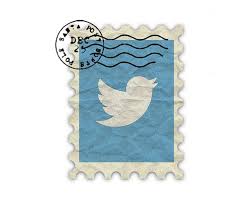I love Twitter. I can’t tell you the number of times I’ve been alerted to a key article or wealth list or study that, because of Twitter, I heard about the moment it was published. Not only does Twitter give me an edge on the news but it allows me to communicate and share information instantly with a group of people I’ve grown to admire and rely on for information about the philanthropic sector and the world in general. In today’s guest post, my colleague, Angie Herrington, shares what she loves best about Twitter, and how it helped her to be her best in her career. You can follow Angie on Twitter at @HerringtonEnotA ~Helen
You can’t miss the negative red number taunting you over the allotted characters. So I combine words into contractions and remove a hashtag. Ok, that took care of 5 characters, but I still need to get from -43 to 0.
“Yeah,” I think, “I spent more time editing that tweet than thinking it up and writing it.”
This won’t come as a surprise to anyone who knows me, but I suffer from “stream-of-Angieness.” I’m wordy. Since rejoining Twitter after three years, it’s reminding me less can be more.
The same idea can be applied to the profiles and analysis we give development officers. I was once in an elevator with a senior gift officer and I asked him about a profile. His response? “Oh, I never read all that stuff.” It was a small and slow elevator, but the good news is we (by which I mean, he) made it out unscathed. My ego? Not so much.
It became a sort of reverse elevator pitch epiphany for me: my analysis (aka “all that stuff”) in profiles needed to be clearer while getting the most valuable information across.
As researchers we deal with large amounts of data and facts. Development officers count on us to synthesize and translate it into key takeaways to cultivate their prospect.
In my last position I did a lot of prospecting. Although the development officers initially seemed excited about the referrals, very few ever made the dreaded cold call. Although one client had over 100 untouched referrals, that gift officer kept asking for more. As one of my favorite people (we’ll call her Beth Hanson, Director of Research at Vanderbilt University) said, “we need to sell our referrals.”
Her analogy was that of a used car salesman’s line “how do I get you in this car?” I may have given the development officer all the facts about the prospect, but I still needed to sell them on why they had to call today.
So I changed my pitch: I went back and added one or two concise sentences about what made that prospect the next major donor to our institution.
Similarly, pages and pages of analysis in profiles can make the average development officer’s eyes glaze over – and waste their time. Here again, the metaphor of the elevator pitch dings the right floor: is it possible to distill down the key information in one to three sentences in each section?
In the case for my former organization, what we decided was most important was:
- How are they connected to us?
- What do they do and what makes them stand out (i.e. Forbes list, significant philanthropy to other organizations, etc.)?
- Significant giving and discussions/plans with our organization?
Twitter has reminded me how I can be a better writer. I need to be precise, make my message have impact, and always edit with the reader in mind.
Keeping the development officer’s attention and making an impression reminds them of our value to the overall development process.
So how am I doing with Twitter these days? #WorkInProgress
LifeHacker’s “How Twitter’s 140-Character Limit Made Me a Better Writer”
Jennifer Blanchard’s “How Twitter Makes You a Better Writer”
Morgan Ribera’s “9 Ways Twitter is Making You a Better Writer” (aka the vocabulary apocalypse and linguistic restraint)
Favorite quotes:
“Writing is 1 percent inspiration, and 99 percent elimination.” ― Louise Brooks
“It is my ambition to say in ten sentences what others say in a whole book.” ― Friedrich Nietzsche
“Be sincere, be brief, be seated.” ― Franklin D. Roosevelt

